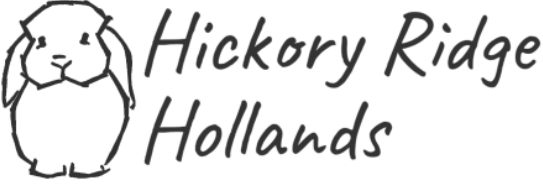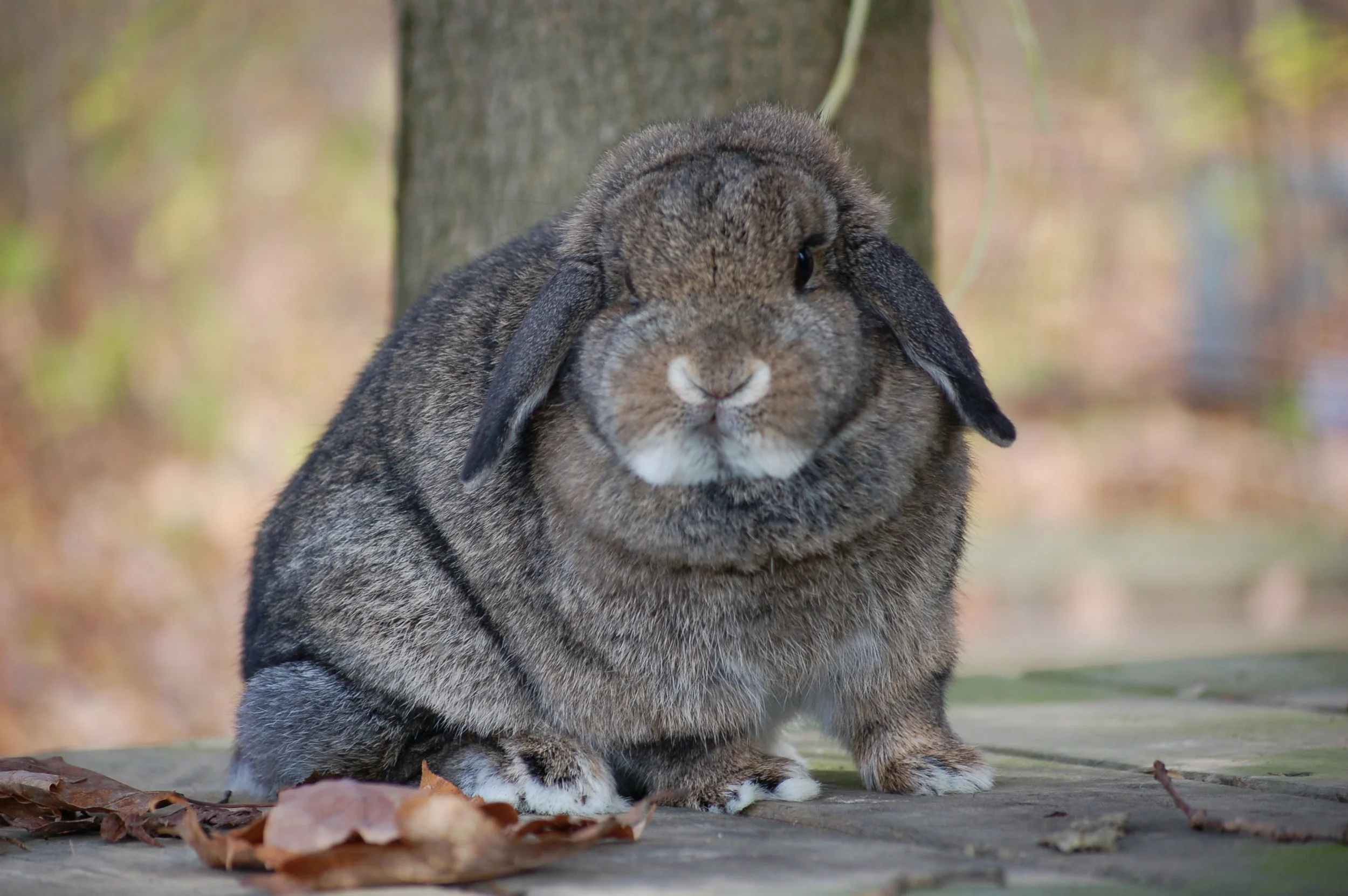Adopting an Older Bunny
Writing about bunny identities got me thinking about how identities can be obscured by circumstances and environment. One of the most common disrupters is moving. If you have ever moved to a different area, or like me - across the country, you understand how long it can take to feel comfortable in your new surroundings. The same is true for a bunny.
When bunnies are sold as kits, they have already gone through the difficult transition of being separated from their mother and siblings. The transition to a new home is significant. However, working for the bunny is the general adaptability of youth. This is why so many people opt to adopt a young bunny.
The bunny that moves to a new home after the age of 6 months is more susceptible to having difficulties transitioning. This is not ALWAYS the case. If a bunny has been raised in a loving environment, and its new home has been chosen carefully, things can go very smoothly. But consider the drastic changes a bunny faces to its small world, even if they go from one loving environment to another.
1. New physical environment - sights, smells, sounds, taste of the water, feed, hay, weather, family
2. New Caretaker - results in differences in handling, attitude, treatment,
3. Breaking and creating of bonds
All this, and a bunny is essentially powerless. No wonder some bunnies have trouble and take a long time to adjust. My heart always goes out to breeder bunnies that may end up having 3 or 4 homes during their lifetimes. From this perspective we can more easily understand snippy behavior, detachment and defensiveness.
I thought I would share 3 examples of challenges we faced adopting older bunnies and how we helped them adjust.
The Grumpy/Angry Bunny
We adopted Molly Brown when she was two years old. She had already had kits with her previous owner and had obviously been content in her first home. When we opened her shipping carrier, she was extremely shy and withdrawn. Molly spent the next 4 months being angry. She had a difficult time transitioning to our food. She frequently lunged at us during cage cleaning and even nipped if we moved her pillow.
When Molly had her first litter with us, she would not allow us to touch her kits. She was extremely protective of them, and even bit me. We had pretty much labeled Molly as a grumpy bunny because we couldn't seem to win her over. Treats, petting, and attention would not move or soften her heart.
Then one day, my husband moved her pillow. She lunged at him, her mouth open to bite. Before she knew what was happening, he had her chin gently, but firmly pressed down to the floor and was scolding her. You wouldn't think that would help, but it did. From that day on, Molly would run to her door if she heard him coming. She would try to get his attention and get him to pet her. It was really blatant. She definitely preferred him to everyone else. Being open to him, made her open to everyone. Molly went from being grouchy, to being a Sweet Bunny and never went back.
Eventually we felt that Molly needed to move into a home. We were thrilled when her new family contacted us, but concerned that the transition would be hard for her. There was no need to worry. Molly adjusted quickly, soaking in all the attention. She litter trained immediately. We even received this picture, showing the prizes Molly won for being an adorable pet.
So what was wrong with Molly, and what was the catalyst for change? We believe that Molly was accustomed to and felt safe in her previous home. Moving her during her breeding years made her feel unsafe and even frantic. Lunging and nipping were her attempts at controlling the situation. When she acted out, and we ignored it, we only made the problem worse. Once we GENTLY, firmly, and consistently put boundaries around her behavior, she sensed that she was safe with us in charge. She relaxed and reverted to the Sweet bunny that she probably always was.
The Depressed Bunny
Tonto came to our rabbitry around nine months of age. As you have probably read, he is quite the Player/Sweet bunny. However, our first few months with Tonto were a challenge. It was hard to pinpoint at first. Tonto transitioned to our food and hay easily. He loved attention and wasn't defensive or grumpy. He seemed fine overall, but it was as if his energy was low. The problems were all in the little details. Here were some that we started picking up on:
1. He didn't respond when we called him Tonty. Only Tonto.
2. He didn't like being held in most positions. Only cradled like a football on his back (which I wasn't confident doing because my hands were too small)
3. He didn't like our cage set-up. We had large spacing between some cages and he was used to being closer.
4. He wasn't bonding to anyone.
We took action. We moved him to a different cage so that he had bunny neighbors on both sides. We only called him Tonto. We made time to pull hold and pet him on a regular basis. We worked on holding him in ways that made him feel safe and secure. We noticed that he liked to sit on top of low boxes, so we added them to his cage. Slowly but surely, we won Tonto over. In fact, he wound up gaining so much confidence that he started bossing us around.
So what was wrong with Tonto, and what was the catalyst for change? We believe that Tonto had truly bonded with and loved his previous owner. He missed her. He missed her voice, her demeanor, the way she handled him, her attention. We had to put in the effort to notice the small things that bothered him, and to adjust those things as much as possible. Then we just needed to spend time with Tonto consistently and show him love. When Tonto was finally convinced of where he stood with us, he became happier and his real identity came through.
The Shy Bunny
I have saved the easiest and most common for last. Our personal experience came via Spring. Spring was about 5 months when she came to us, and the clock was ticking. If you don't breed a holland between 6 and 9 months, their tiny hips can lock in place, making it dangerous for them to give birth. We preferred to have our bunnies completely adjusted and happy in their new home before attempting to breed them. Insecure moms can lead to all kinds of challenges when it comes to caring for their kits.
Spring wasn't grumpy or depressed, but she was definitely hesitant. She avoided us and seemed extremely nervous during regular cage cleaning (a daily thing for us). She was willing to be held, but didn't seem to relax and enjoy being pet. She was even hesitant to take treats, usually opting to have them dropped near her food bowl while she sat at the back of the cage.
Drawing Spring out was just a matter of consistent kindness. We noticed that she loved having a pillow, so we made sure she was rarely without one. We tried to greet and talk to her calmly, and to pet her gently. We worked on pulling her out to be held more often and would pet her or hang out with her WHILE doing something else, like reading a book or magazine. This tends to make a bunny feel like they are not the center of attention, a preferable position for a shy bunny. It also allows them to CHOOSE to be physically closer to you and to move away on their own volition. Suddenly you are not a force to be avoided, but rather something to be curious about.
It took a month or two, but Spring finally warmed up to everyone and became a rabbitry favorite. She loves to pet and cuddled, true to Sweet bunny form.
So what was wrong with Spring, and what was the catalyst for change? We believe that Spring was just stressed by the move and while she wanted to be comforted, she wasn't yet confident about her new home, or her new owners. She needed the time and space to adjust her own way. Some invasive things, like cleaning and cutting nails were just necessary and couldn't be avoided. But where we could offer Spring personal space and time, we did.
We hope this article helps those who choose to adopt an older bunny. Many times the temperament we first see is not really indicative of a bunny's true identity. If we work on carefully stripping away the environmental and situational factors that are stressing them, we can start things moving in a positive direction. We would also like to point out that behaviors that seem aggressive can be indicators of stress, not necessarily abuse. All three of the bunnies mentioned above came from great homes. Their reactions to the changes they were facing were just reactions - not learned patterns. Lastly, try to be flexible with the timeline for change. Spring adjusted in just two months, Tonto in five or six, Molly took an entire year. It's really a timeline you cannot force, but one that you can assist with patience and love.





